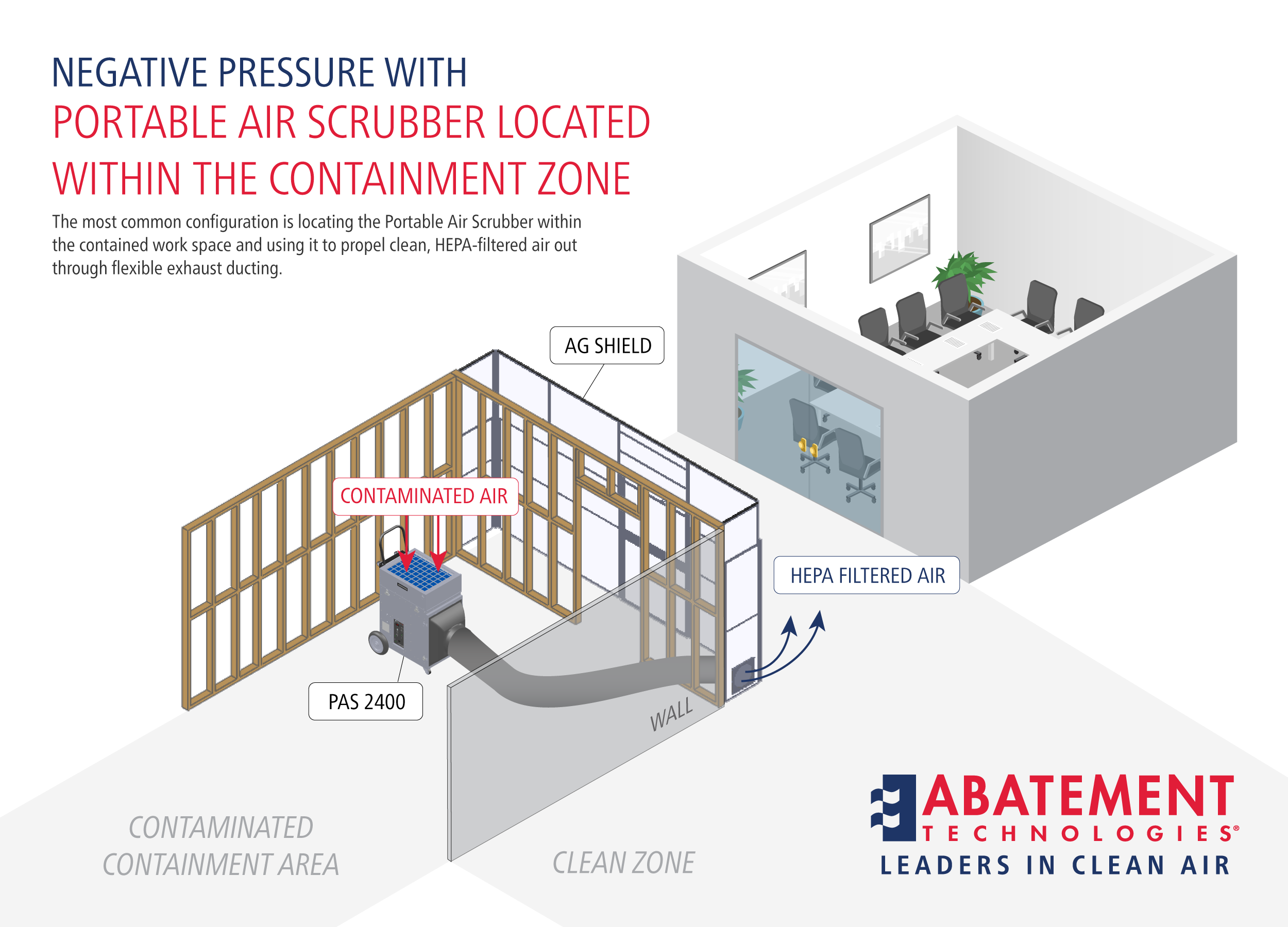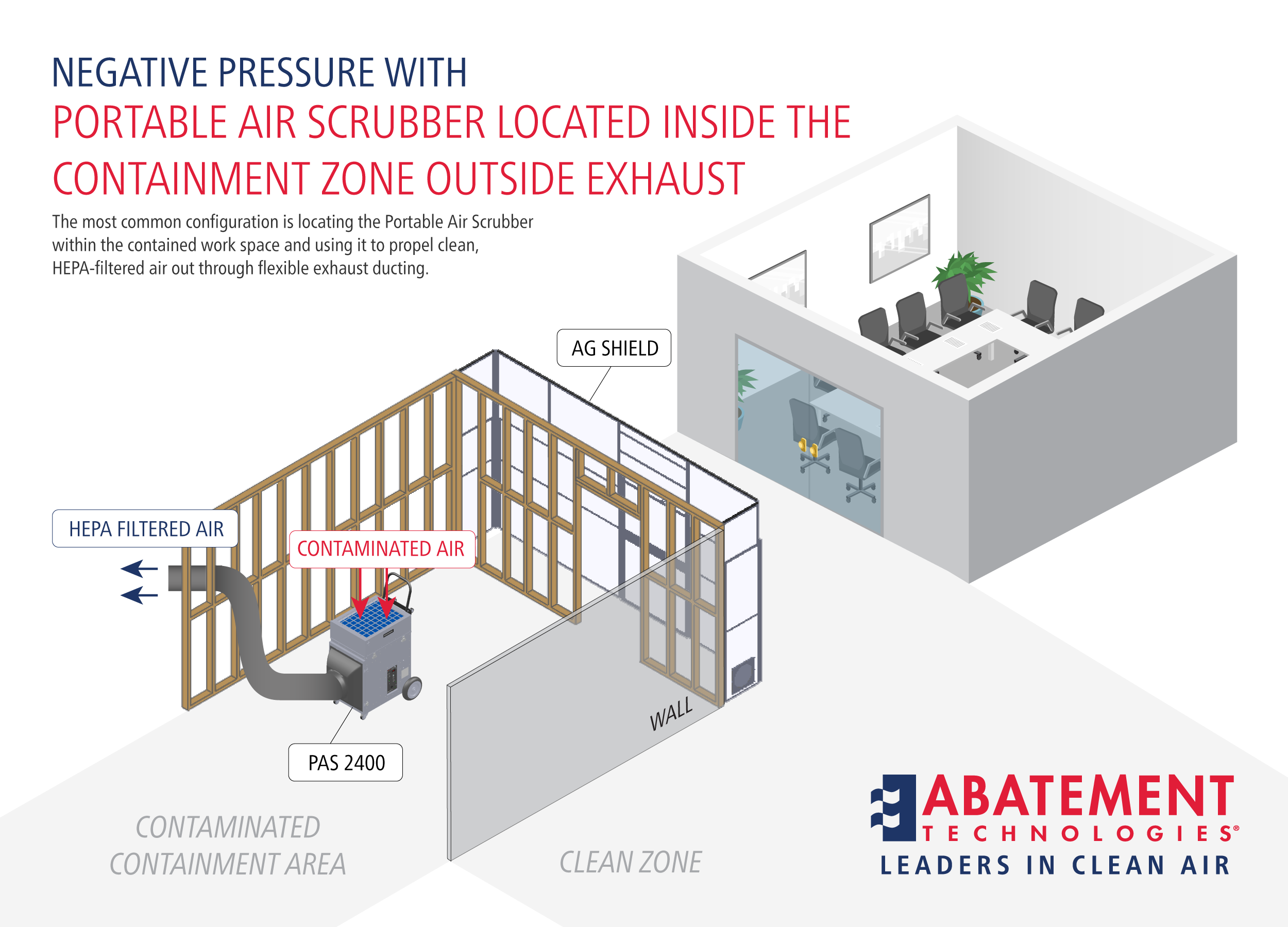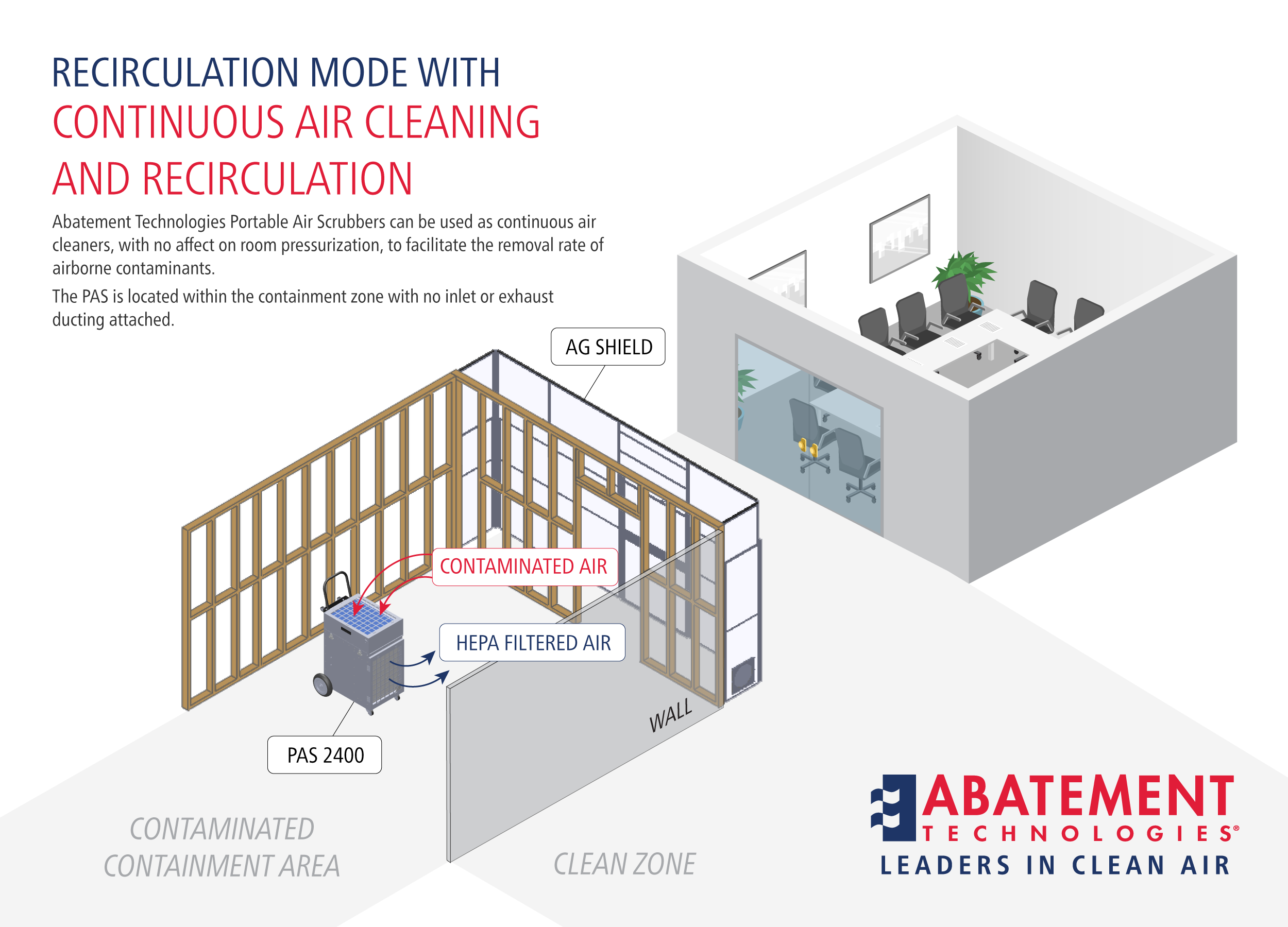
ABATEMENT& REMEDIATION
- ABATEMENT & REMEDIATION
- MODES OF OPERATION
- LINKS & ARTICLES
- NRTL SAFETY CERTIFICATION
- AIR CHANGE CALCULATOR
Abatement & Remediation
HELPING CONTRACTORS PERFORM MORE EFFECTIVELY AND EFFICIENTLY
Abatement Technologies® powerful line of high-quality HEPA-AIRE® Negative Air Machines and specially-formulated, environmentally-sensitive chemicals help asbestos contractors perform more effectively and efficiently. With over 25 years of design and engineering experience, Abatement has developed a reputation for industry-leading innovations that are second to none. Learn how our state-of-the-art asbestos abatement products can increase contractor productivity and profits.
Modes of Operation




Links & Informative Articles on Asbestos Abatement
INFORMATION ON PROTECTING BUILDING ENVIRONMENTS AND IMPROVING INDOOR ENVIRONMENTAL QUALITY
Ozone Transport Commission - www.otcair.org
Guidance for Filtration and Air-Cleaning Systems to Protect Building Environments from Airborne Chemical, Biological or Radiological Attacks, National Institute for Occupational Safety and Health - http://www.cdc.gov/niosh/docs/2003-136/
Guidance for Protecting Building Environments from Airborne Chemical, Biological, or Radiological Attacks, National Institute for Occupational Safety and Health - www.cdc.gov/niosh/docs/2002-139/
Indoor Environmental Quality (IEQ), National Institute for Occupational Safety and Health - www.cdc.gov/niosh/topics/indoorenv/
Information on Activated Carbon. How does it work? How is it used? - Activated Carbon Filters
NRTL Safety Certification
ABATEMENT TECHNOLOGIES® HEPA-AIRE® AND PREDATOR® PORTABLE AIR SCRUBBERS HAVE BEEN TESTED BY A NATIONALLY RECOGNIZED TESTING LABORATORY (NRTL).
Required Testing and Certification of Electrical Products
In the USA, OSHA safety standards for general industry and construction and the National Electrical Code require testing and listing (certification) of electrical products to applicable standards. It is important to note that this testing must be performed on an electrical device even if the individual electrical components used in that device are all listed or approved.
Testing must be done by an OSHA-recognized NRTL, such as UL (Underwriters Laboratories), ETL (Environmental Testing Laboratories), TÜV SÜD, or CSA (Canadian Standards Association). In Canada, The Standards Council of Canada has adopted standards for the Canadian Electrical Code developed on its behalf by the Canadian Standards Association (CSA). Third party testing from a laboratory or other organization, not NRTL-certified is not acceptable, even if such testing is done to applicable standards.
Why is NRTL Certification Important?
Unless a unit is properly tested, users have no way of knowing whether it is properly and safely designed to meet the requirements of the applicable electrical codes. It is wise to require written vendor verification that the products you purchase are NRTL certified.
Aren't All Air Filtration Products Properly Certified?
No. Unfortunately, many of the portable air scrubbers and air filtration systems sold to and used by contractors, healthcare facilities, and others are not certified. It is therefore impossible to know whether such products are safe or perhaps placing workers at risk.
